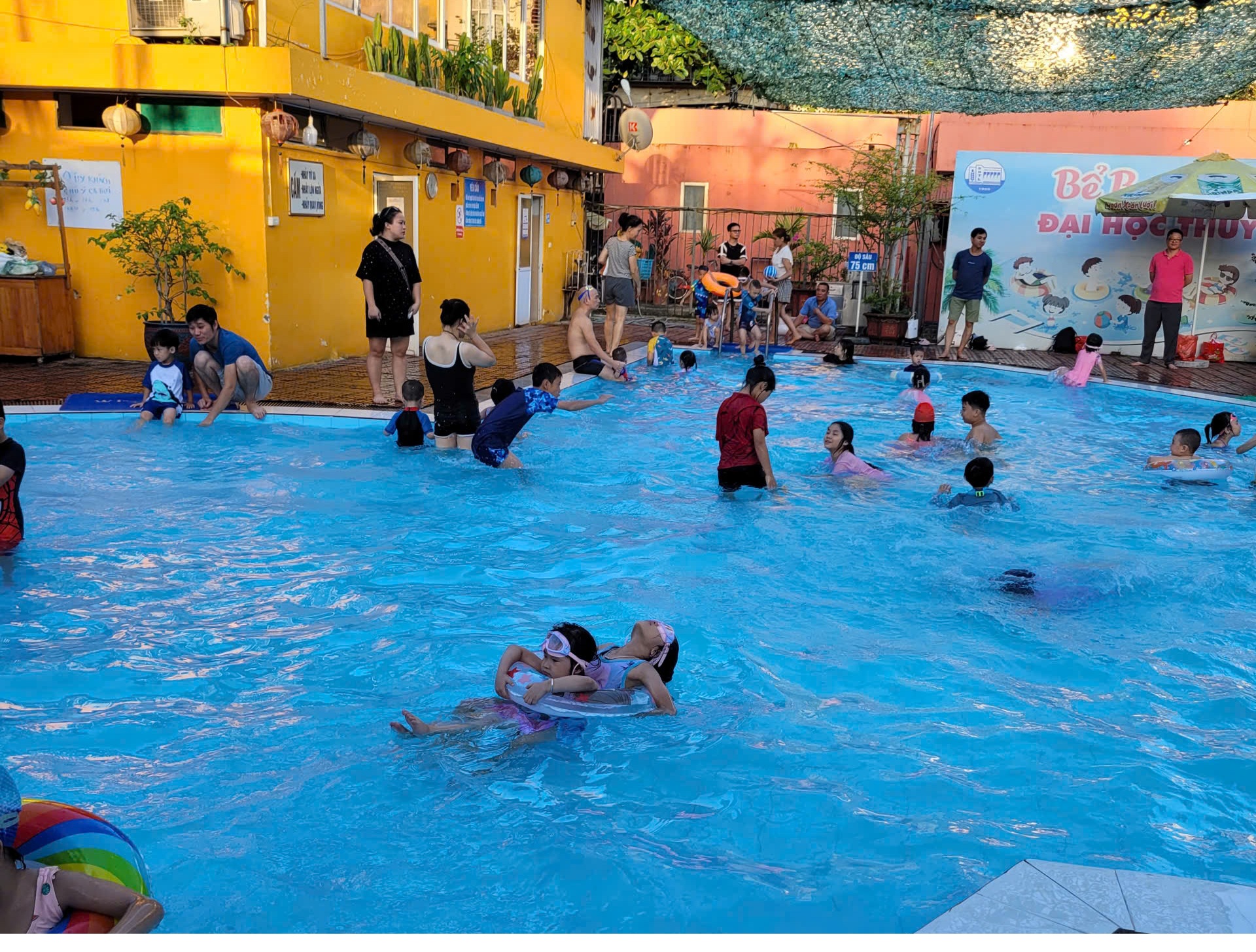Swimming promotes height development, strengthens the musculoskeletal system, improves respiratory function and cardiovascular health, enhances motor coordination, and boosts resistance in children. However, according to Dr. Bui Thi Huong Thuy from the Pediatrics Department of Tam Anh General Hospital in Hanoi, if pool hygiene and post-swim care are neglected, children can experience several health issues.
Respiratory infections: Unsanitary water or accidental swallowing of water while swimming can introduce viruses and bacteria into the respiratory tract, causing nasal, throat, and bronchial inflammation. Children's Eustachian tubes are shorter and more horizontal than adults', making water more likely to accumulate in their ears while swimming. This changes the pH balance in the ear canal, creating an environment for microorganisms, bacteria, viruses, and fungi in the water to thrive and cause ear infections. Inhaling chlorine fumes or swimming in unsanitary pools containing bacteria and mold can also irritate the upper respiratory tract. Symptoms include headaches, itchy ears, earaches when touched, sinus pain, runny nose, sore throat, cough, fever, and difficulty breathing.
Pink eye: Excess chlorine, bacteria, and viruses in the water can irritate children's eyes, leading to redness, itching, tearing, and light sensitivity. The condition spreads easily in group settings if children share towels or goggles, or rub their eyes after contact with contaminated water.
Contact dermatitis and fungal skin infections: Chlorine in pool water can dry out, peel, irritate, or cause rashes on children's skin, especially those with sensitive skin. Bacteria and fungi present on pool decks, in showers and changing rooms, and on shared towels can cause skin conditions such as allergic dermatitis, ringworm, tinea versicolor, and athlete's foot. Scratching itchy areas can spread the infection or increase the risk of viral or fungal entry and secondary infections.
Diarrhea and parasitic infections: Children may accidentally swallow pool water, especially while playing or if they are not yet proficient swimmers. If the water is not properly treated, it may contain pathogens such as E. coli, Cryptosporidium, and Giardia, which can cause diarrhea, nausea, and fever.
Pathogens in pool water can also lead to fungal infections, as well as infections of the genital and urinary tracts. The pool environment can also transmit other infectious diseases like hand, foot, and mouth disease. Continuous exposure to pool water can make children's hair dry and brittle due to the effects of water treatment chemicals such as copper ocid, aluminum salts, and chlorine.
 |
Children swimming in the summer. Photo: Hai Au |
Dr. Thuy advises parents to stop their children from swimming and bathe them with clean water at the first sign of itching, burning, rash, or redness. Children should not swim with open wounds or if they have a runny nose, sore throat, ear infection, flu, diarrhea, cough, fever, or any other infectious disease.
If water enters the ear, parents should guide their children to tilt their heads to allow the water to drain out. Never use hard objects to clean the ears. Children should wear swim caps and goggles, and can also use earplugs specifically designed for swimming. Ears should be dried thoroughly after swimming. If the child experiences any discomfort, dry the ears and apply antiseptic ear drops.
Children should warm up gently before swimming to avoid cramps, and swim for 30-45 minutes per session. To prevent choking on water, children should be taught proper breathing techniques. If water enters the nose and throat, they should blow it out forcefully. After swimming, rinse eyes, nose, and gargle with saline solution, and keep the child warm. Avoid swimming at midday or late at night to prevent catching a chill. Do not let children swim on a full or empty stomach. Apply a light moisturizer before and after swimming if the child's skin is dry.
Parents should choose pools with standard filtration and disinfection systems. Adults should supervise children throughout their swim, even if they have flotation devices or lifeguards are present. Parents should also be equipped with basic first aid skills such as CPR, and how to handle choking, cramps, and fainting in the water to address emergencies promptly.
Trinh Mai
| Readers can submit questions about children's health here for doctors to answer. |












